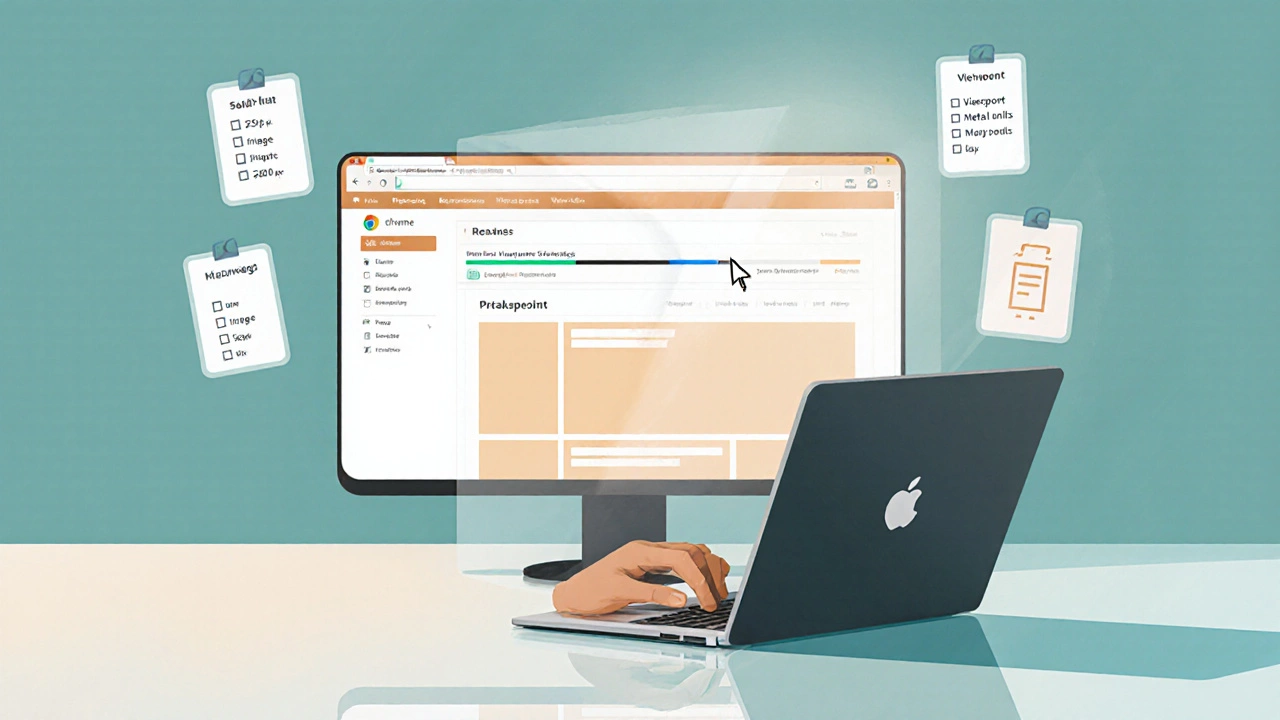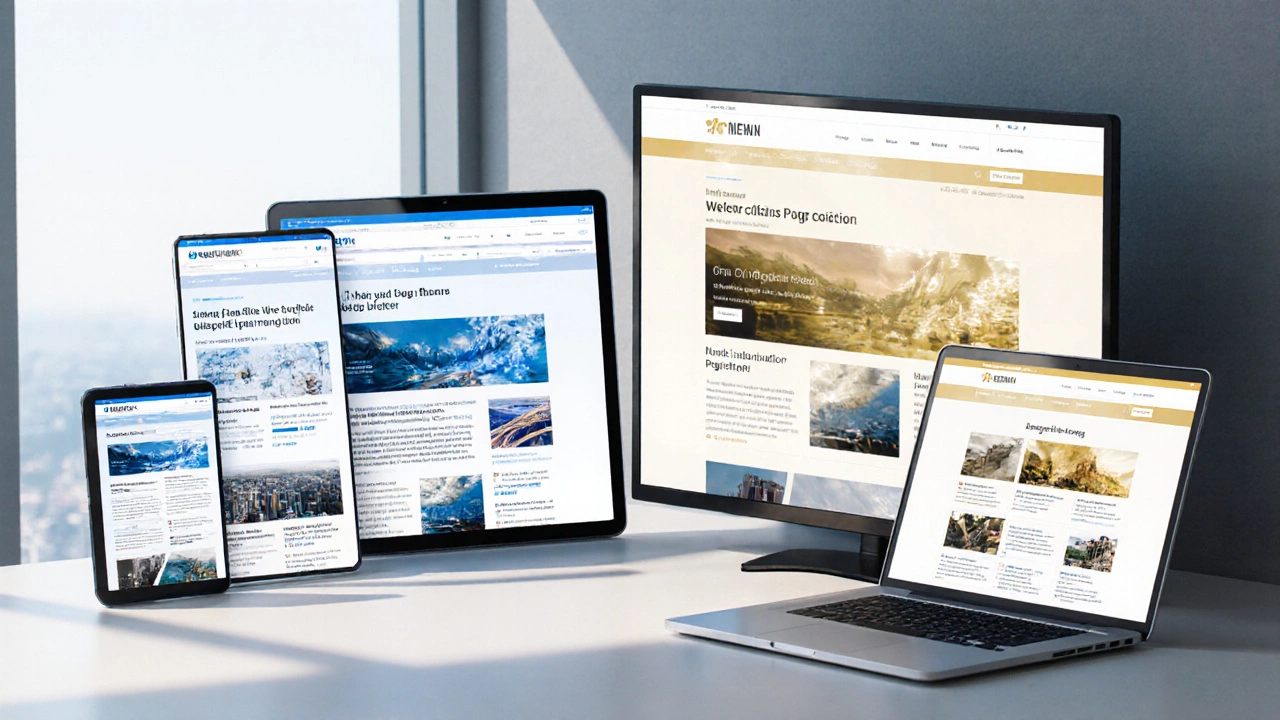Responsive Grid Calculator
Grid Configuration
Breakpoint Guide
Common responsive breakpoints based on device sizes:
repeat(auto-fit, minmax(250px, 1fr)) for automatic column sizing that adapts to any container size.
When you hear Responsive Web Design is a design philosophy that ensures web pages adapt fluidly to any screen size, from phones to 4K monitors, the goal sounds simple-but the implementation can be messy. Luckily, modern browsers and a handful of tools let you automate most of the heavy lifting.
Why automate responsiveness?
Manually tweaking layouts for every breakpoint is a time sink. Users expect a site to work on everything from a pocket‑sized Android to a widescreen TV. If a page breaks on a device, bounce rates climb and SEO suffers. Automation means you set rules once and let the browser handle the rest, freeing you to focus on content and interaction.
Core tools that power auto‑responsive design
Four building blocks form the backbone of any automatic solution:
- CSS Media Queries conditional CSS blocks that activate when the viewport meets defined criteria
- Flexbox a one‑dimensional layout model that distributes space along a row or column
- CSS Grid a two‑dimensional system that places items into rows and columns automatically
- Viewport Meta Tag an HTML tag that tells mobile browsers how to scale the page
Combine these with a little JavaScript-often just a ResizeObserver API that watches element size changes and reacts instantly-and you have a fully automatic pipeline.
Step‑by‑step: Fluid layouts with Media Queries and Flexbox
- Start with the
<meta name="viewport" content="width=device-width, initial-scale=1">tag in the<head>. This guarantees the browser respects your CSS breakpoints. - Define a mobile‑first base style. Keep widths in percentages, use
max-width: 100%on images, and let Flexbox handle alignment.body {font-family: system-ui; margin: 0; padding: 0;} .container {display: flex; flex-wrap: wrap; gap: 1rem;} .item {flex: 1 1 45%; min-width: 200px;} - Add a media query that kicks in at 768px.
@media (min-width: 768px) { .item {flex: 1 1 30%;} } - Repeat for larger screens (1024px, 1440px) adjusting the flex‑basis as needed. Because the layout is flex‑based, no extra positioning code is required.
This approach automatically re‑flows content whenever the viewport crosses a breakpoint, without writing separate CSS for tablets, laptops, or TVs.
Leveraging CSS Grid for device‑agnostic grids
When you need both rows and columns, Grid shines. Use grid-template-columns: repeat(auto‑fit, minmax(250px, 1fr)); to let the browser decide how many columns fit.
.gallery {
display: grid;
gap: 1rem;
grid-template-columns: repeat(auto-fit, minmax(250px, 1fr));
}Notice there are no explicit breakpoints. The auto‑fit function creates as many 250px‑wide columns as the space allows, then stretches them to fill the remaining width. The layout instantly adapts from a single‑column phone view to a multi‑column desktop view.
Framework shortcuts: Bootstrap, Tailwind CSS, and utility‑first approaches
If you prefer not to write raw CSS, a responsive framework can do the heavy lifting. Below is a quick comparison.
| Approach | Automation Level | Learning Curve | Bundle Size (KB) |
|---|---|---|---|
| Bootstrap | High - pre‑built grid, utilities, components | Medium - class‑based documentation | ~150 |
| Tailwind CSS | Very High - utility classes for every breakpoint | Steep at start, then fast | ~80 (purged) |
| Pure CSS (Flexbox + Grid) | Medium - you write the rules | Low - pure CSS knowledge | ~0 (no extra library) |
| Webflow | Full - visual editor generates responsive CSS | Low - drag‑and‑drop | Varies (hosted) |
| Elementor | Full - WordPress plugin creates responsive markup | Low - UI builder | ~30 (plugin) |
Pick the tool that matches your project size. For a lean site, pure CSS wins on performance. For rapid prototypes, a visual builder like Webflow or Elementor may be faster.
No‑code options: Webflow & Elementor for instant responsiveness
Both platforms let you design on a desktop canvas while automatically generating the necessary CSS Media Queries behind the scenes. The key advantage is you never touch code, yet the output follows best‑practice breakpoints (320‑480‑768‑1024‑1440‑1920px). Export the code from Webflow if you need a static site, or keep it hosted for easy updates.

Testing and fine‑tuning across breakpoints
Automation is great, but you still need to verify the result. Use Chrome DevTools’ device toolbar, toggle the viewport, and watch the layout shift. For dynamic components, attach a ResizeObserver to recalculate font sizes or canvas dimensions:
const ro = new ResizeObserver(entries => {
for (let entry of entries) {
const cr = entry.contentRect;
document.documentElement.style.setProperty('--vh', `${cr.height * 0.01}px`);
}
});
ro.observe(document.body);
Setting a custom --vh variable solves the mobile‑browser address‑bar issue on many devices.
Checklist & common pitfalls
- Always include the viewport meta tag.
- Prefer relative units (%, vw, em, rem) over fixed pixels.
- Test on real devices, not just emulated screens.
- Avoid “mobile‑only” CSS hacks; let the base style be mobile‑first.
- Don’t overload your page with large images-use
srcsetandsizesattributes. - When using a framework, purge unused CSS to keep bundle size low.
Following this list will keep your site fast, accessible, and truly responsive web design for every visitor.
Frequently Asked Questions
Do I need JavaScript for a responsive site?
Most responsiveness comes from CSS alone. JavaScript is only required for advanced cases like dynamic component resizing or content loading based on screen size.
What breakpoint values should I use?
A common set is 320 px (mobile), 480 px (small phones), 768 px (tablets), 1024 px (small laptops), 1440 px (large screens), and 1920 px (4K). Adjust based on your analytics.
Can I make an existing static site responsive without rewriting everything?
Yes. Start by adding the viewport tag, replace fixed widths with percentages, and introduce a simple Flexbox container. Then layer media queries for larger screens.
Is responsive design SEO‑friendly?
Google recommends responsive design as the best practice because it serves a single URL per page, avoids duplicate content, and provides a consistent user experience.
What are the performance trade‑offs of using a framework?
Frameworks add CSS/JS weight, which can affect page load times. Use tools like PurgeCSS or the framework’s built‑in tree shaking to drop unused classes.



